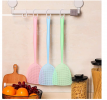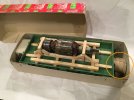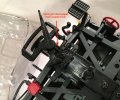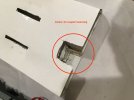playmofire
Registered
I run LGB Toy Train wagons because they are shorter than other types and so better for my size of layouts. However, there always seems to be a wagon which comes uncoupled - I run them as they come, hook only one end and hook and loop the other.
This seems to be a problem with the wagon concerned rather than the layout, as the same wagon will act the same on a different layout.
Changing the coupling for one from a wagon which doesn't uncouple, seems to make no difference.
I'm reluctant to change to a hook and loop at each end as this complicates shunting manoeuvres.
This seems to be a problem with the wagon concerned rather than the layout, as the same wagon will act the same on a different layout.
Changing the coupling for one from a wagon which doesn't uncouple, seems to make no difference.
I'm reluctant to change to a hook and loop at each end as this complicates shunting manoeuvres.







